ARTICLE
Telia Rumal
A yarn-dyed, patterned cotton textile from South India, the telia rumal derives its name from the Hindustani for ‘oily kerchief’. This alludes to the oily feel and smell of the cloth, which are due to the distinctive treatment of oil, ash and dung used to prepare the yarn for dyeing. Historically used primarily as head- and neck-scarves as well as waist cloths, it was also an important export, under the trade name ‘Asia rumal’. It is among the few South Asian textiles that are woven with the double ikat technique, in which the warp and weft yarn are both resist-dyed before being woven on a handloom — like the patola from Gujarat.
It originated in the ancient coastal weaving town of Chirala in present-day Andhra Pradesh, probably in the mid-nineteenth century. In the first quarter of the twentieth century the technique spread inland to Pochampalli and Puttapaka in neighbouring Telangana, which are the main centres of its production today. The craft has been practised for generations by members of the Sali caste, a mainly South Indian Hindu community of weavers. The telia rumal is also locally known as chowka, or ‘four-cornered’, perhaps alluding to its corner patterns, and chitike, from the Telugu chitti or ‘small’, referring to the small dash-like motifs that originally made up the woven pattern. Although mostly made of cotton and used in everyday wear by men, the textile has also been woven in silk and used by women from the upper classes.
The telia rumal is typically designed as a square, anywhere between 55 centimetres and 120 centimetres across, but sold — and often used — in an uncut pair. The main field is often divided into a grid filled with repeating motifs, and is surrounded by a wide, single-coloured border. The characteristic colour palette is red, black (or brown) and white, with black in the centre field, contrasting the wide red border. The colours are occasionally reversed. The border and main field are always separated by thin white stripes, which intersect to form corner fields that are often filled with fine checks; white is also prominent in the repeating central motifs.
In the traditional method, the red is achieved using an alizarin dye derived from madder root, or aal, a dye extracted from the Indian mulberry plant. Black is achieved by dyeing over the red with erakasu, a brown dye from the resin of the catechu tree (Acacia catechu), or through a fermented mixture of iron filings, jaggery and water. Iron filings may also be added to the alizarin solution to yield brown. These natural dyes have largely been replaced by synthetic ones in contemporary practice.
The process of creating the telia rumal begins with the pre-treatment of the cotton yarn. After soaking it in water overnight, the yarn is first steeped in a slurry of sheep, goat or cattle dung for twenty-four hours, and then washed out and dried. Next it is treated in a specially prepared solution of sesame or castor oil mixed with the ash of burnt castor-seed pods. This involves submerging and working the yarn in this mixture for fifteen minutes, usually in the evening so that it can be squeezed out and left overnight before sun-drying it the following day. This process is repeated for sixteen days, or done twice a day for eight days, at the end of which the yarn is washed and dried. It is this process that makes the telia rumal soft and gives it the distinct texture and smell from which it derives its name. This step also acts as a form of mordanting, as the ash treatment helps the yarn to better absorb the alizarin dye. Synthetic dyes, including naphthol dyes, do not require the yarn to be pre-treated.
The next step is the preparation of the warp and weft yarns. The yarn is wound onto cylindrical cones and taken to a warping mill, which enables the correct length of the warp yarn to be wound in the right sequence. The weft is similarly prepared on a semi-circular frame. Prior to the use of the warping mill, the weft preparation would be done by hand on semi-circular wooden frames with pegs — locally known as asu — or on poles in the streets.
The complexity of the double ikat technique used in its production requires the design to first be mapped onto a naksha, or graph. The weaver then estimates how many threads will be woven in a square inch, depending on the thickness of the yarn, and based on this estimation the yarn is divided and tied off into units. The warp yarn is then folded to enable the tying of eight to ten rumals at a time, which are woven as a single length.
The design is traced onto the yarn units with the help of a guide string. The parts of the warp and weft yarns that have been marked to resist the dye are tied with string or rubber ties. This process is locally known as pagdu bandhu — Telugu for ‘tie-dye’. The slight bleeding of the dye at each end of these tied sections results in the distinctive soft edges in the pattern on the finished textile. The weft yarns are dyed only after the warp has been set on the loom. They are wound on the asu, stretched, marked and dyed according to the design, and finally wound onto bobbins for weaving. Traditionally, a fly-shuttle pit loom is used to weave the telia rumal.
Owing to the nature and complexity of the double ikat technique, telia motifs were historically restricted to simple geometrical shapes such as diamonds, stars, squares, dots, stripes and checks, often arranged in a combination resembling mosaic work. Between the 1920s and 1930s, however, they underwent a change and expanded to include figurative patterns, and even some contemporary motifs such as aeroplanes, gramophones and clocks.
Some popular local designs include chinni ashalu, or ‘small patterned’; maddikiya ashalu, or patterns based on the fruit of the maddi tree (Terminalia arjuna); batana, or gram; pilli adagulu, or cat pawprints; mallipavu, or jasmine flower; tambelu burra, or tortoise shell; muggu pital, or rangoli; and chakrapala, or wheel. Most of the telia rumals made in Pochampalli favoured geometrical designs, while Chirala held a preference for figurative designs such as elephants, flowers, swastikas, lions, birds and moons.
As the oil in the telia rumal made it water-resistant and also kept out dust, the fabric was popular among fishermen, farm workers, dhobis or washermen, and cowherds. They wore it wrapped around their lower body as lungis, and as scarves or turbans wrapped around their head or neck as the oil also helped keep the head cool. It was used locally in the Andhra and Odisha regions as well as other parts of India, exported across the Indian peninsula as far as Bombay (now Mumbai) on the western coast. In the first half of the twentieth century, it was in great demand as an export textile to Burma (or Myanmar) and the Persian Gulf, as well as East Africa, largely catering to Muslim communities in these regions and used in much the same way. Buyers relied on the smell, and even taste, of the fabric to verify its authenticity. Production of the telia rumal in Chirala died out by the middle of the twentieth century in the face of printed imitations from Manchester and China, as well as decline in trade and demand with the Second World War.
Weavers in Pochampalli and Puttapaka, however, innovated with new motifs, sizes and formats, synthetic dyes, and even new materials like silk, catering to a new market. Telia rumals woven in finer fabric had also been worn as head coverings by princesses in the court of the nizam of Hyderabad, often embellished with embroidery or khadi work. In the nineteenth and twentieth centuries, the textile went on to achieve popularity among upper-class Muslim women in the Deccan as the technique was adapted to silk and a larger size that could be worn as a sari. These saris retained the wide border — doubled along the centre as it would be between two uncut rumals — and featured the central grid pattern typical of the telia rumal, in this case populated with embroidered motifs such as ashrafi buti or ‘gold coin’, rendered in zari.
Today, the telia rumal has evolved from its traditional form into a design language that is used on sarees, dupattas and stoles — a transition that began in the 1950s. While cotton yarn is still used in telia rumal weaving, mulberry silk, tussar and mercerised cotton are also used. The craft has received a significant boost through the efforts of revivalists such as Suraiya Hasan Bose and Martand Singh. Since the 1970s, the traditional techniques of telia dyeing and weaving have been revived through the efforts of Gajam Govardhan, a hereditary master weaver who brought the waning craft from Chirala to his village, Puttapaka. Besides having exhibited his hand woven pieces internationally at the Festivals of India in the 1980s and 1990s, Govardhan and his family have trained over 800 weavers in the craft. In 2020, following Govardhan’s application on behalf of the weavers of Puttapaka, the Puttapaka telia rumal was recognised with a Geographical Indications (GI) tag.
Bibliography
Buhler, Alfred, Eberhard Fischer, and Marie-Louis Nabholz. “Telia Rumal, Cotton Ikat Textiles from Andhra Pradesh.” In Indian Tie-Dyed Fabrics. Ahmedabad: Calico Museum of Textiles, 1981.
Chishti, Rta Kapur, and Rahul Jain. Handcrafted Indian Textiles. New Delhi: Roli Books, 2000.
Government of India. “Telia Rumal: GI Application No. 599.” Geographical Indications Journal 129 (January 2020): 21–28. Accessed September 15, 2021. https://ipindia.gov.in/writereaddata/Portal/IPOJournal/1_4831_1/Journal_129.pdf.
Government of India. “GI-Application Number 4.” Geographical Indications Journal, no. 2 (September 2004). Accessed September 15, 2021. https://search.ipindia.gov.in/GIRPublic/Application/Details/4.
Khurana, Purva. “Resurrection of Ancient Textile Craft of Telia Rumal Geometric Double Ikat of Andhra Pradesh.” PhD diss., Banasthali University, 2015. https://shodhganga.inflibnet.ac.in/handle/10603/145039.
Mohanty, Bijoy Chandra, and Kalyan Krishna. “Technology”. In Ikat Fabrics of Orissa and Andhra Pradesh, edited by Moti Chandra. Ahmedabad: Calico Museum of Textiles, 1974.
Mittal, Jagdish. “Telia Rumals of Pochampalli and Chirala.” Marg 15, no.4 (1962): 26–28. https://marg-art.org/product/UHJvZHVjdDoyNTg1.
Nanisetti, Serish. “‘Putappaka Telia Rumal’ gets GI Tag.” Hindu, May 13, 2020. https://www.thehindu.com/news/cities/Hyderabad/puttapaka-telia-rumal-gets-gi-tag/article31577526.ece.
Richardson, David, and Sue Richardson. “Indian Telia.” Asian Textile Studies. 25 January 2021. Accessed May 1, 2024. http://www.asiantextilestudies.com/telia.html.
Sharma, Swati. “In the Letter and Spirit of Ikat.” New Indian Express, July 7, 2013. https://www.newindianexpress.com/magazine/2013/jul/07/In-the-letter-and-spirit-of-Ikat-494179.html.
Thatipalli, Malik. “The Story of Textiles in Independent India Is Closely Linked to the Life of One Hyderabadi Woman.” Scroll.in, May 8, 2019. https://scroll.in/magazine/920274/the-story-of-textiles-in-independent-india-is-closely-linked-to-the-life-of-one-hyderabadi-woman.




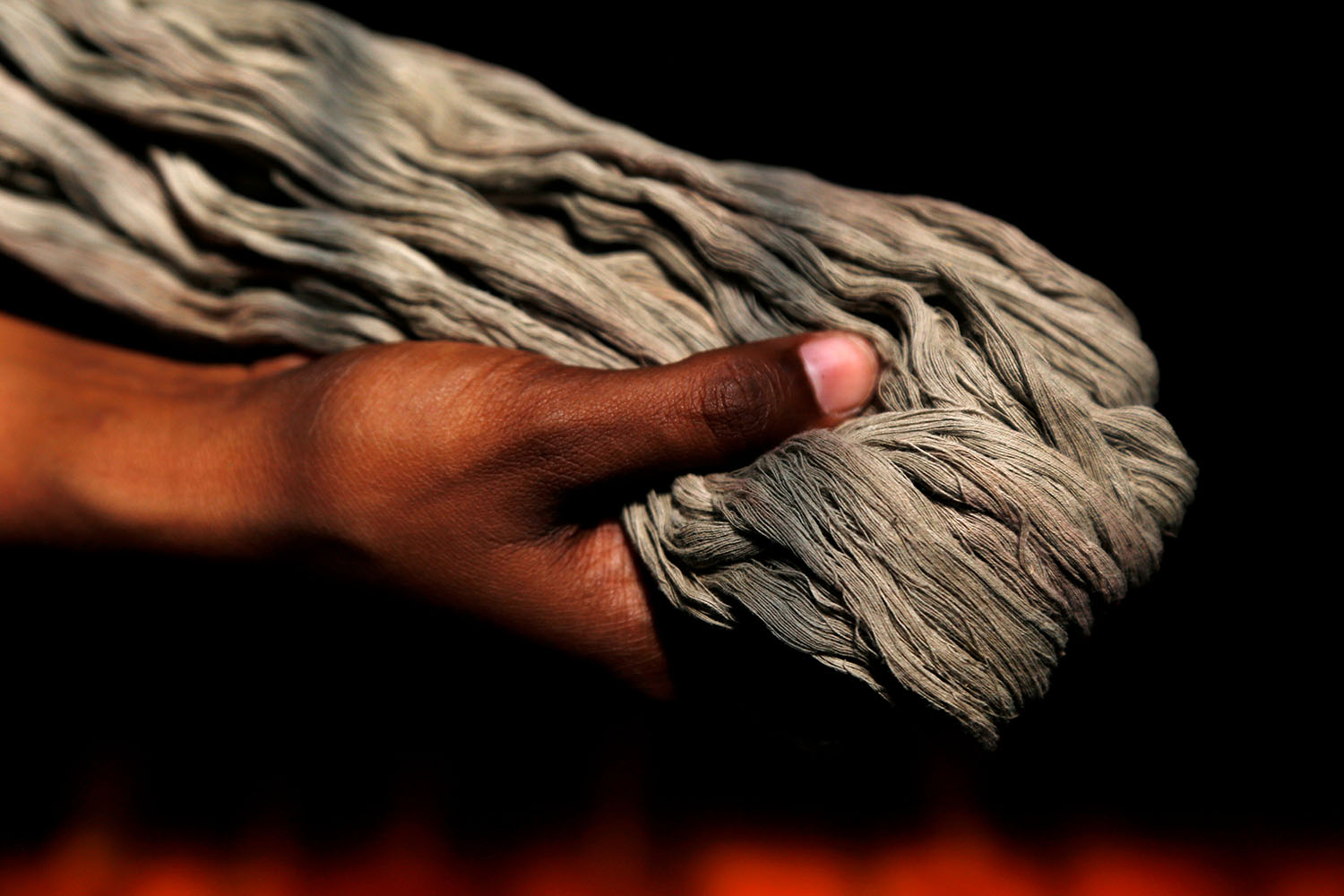
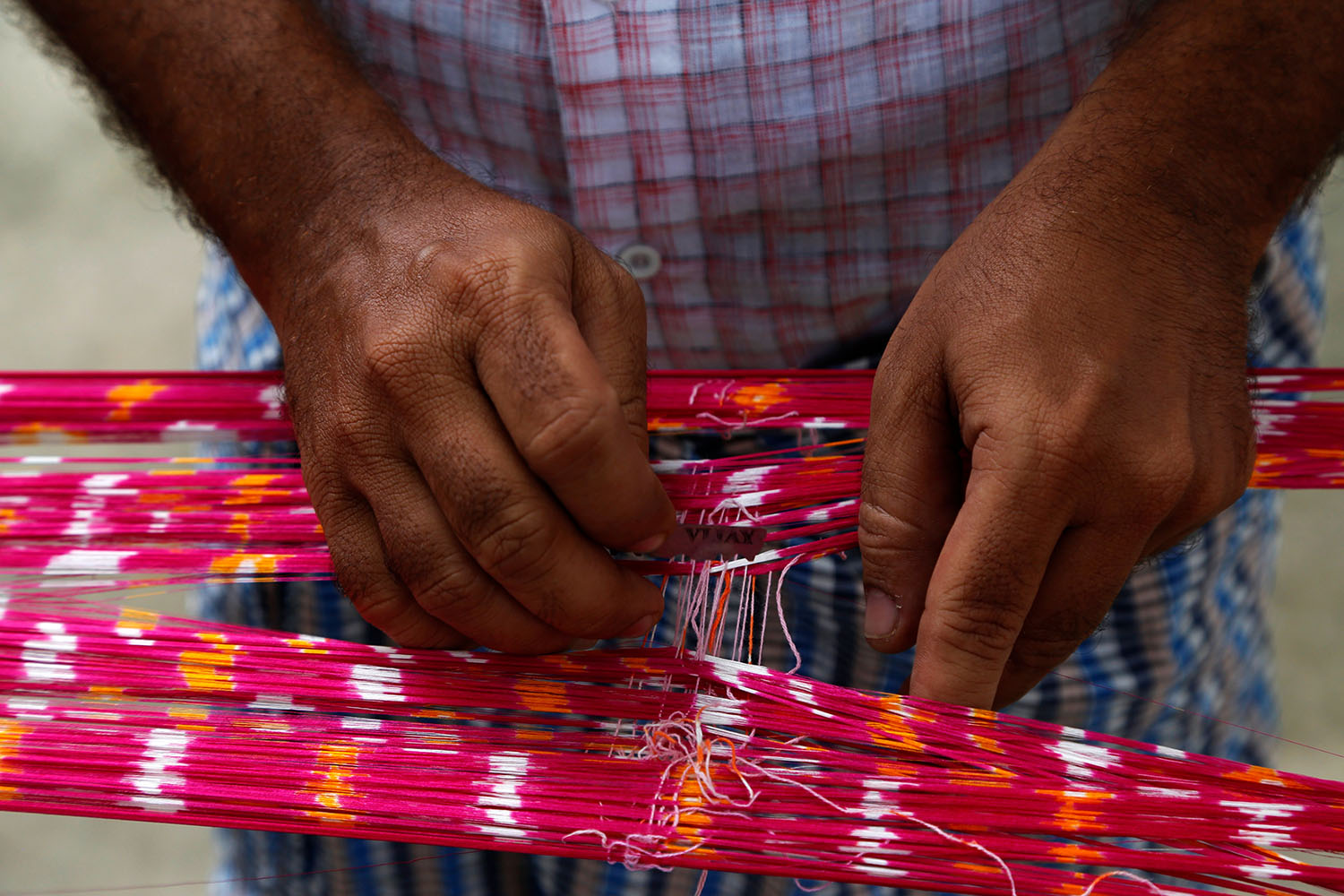
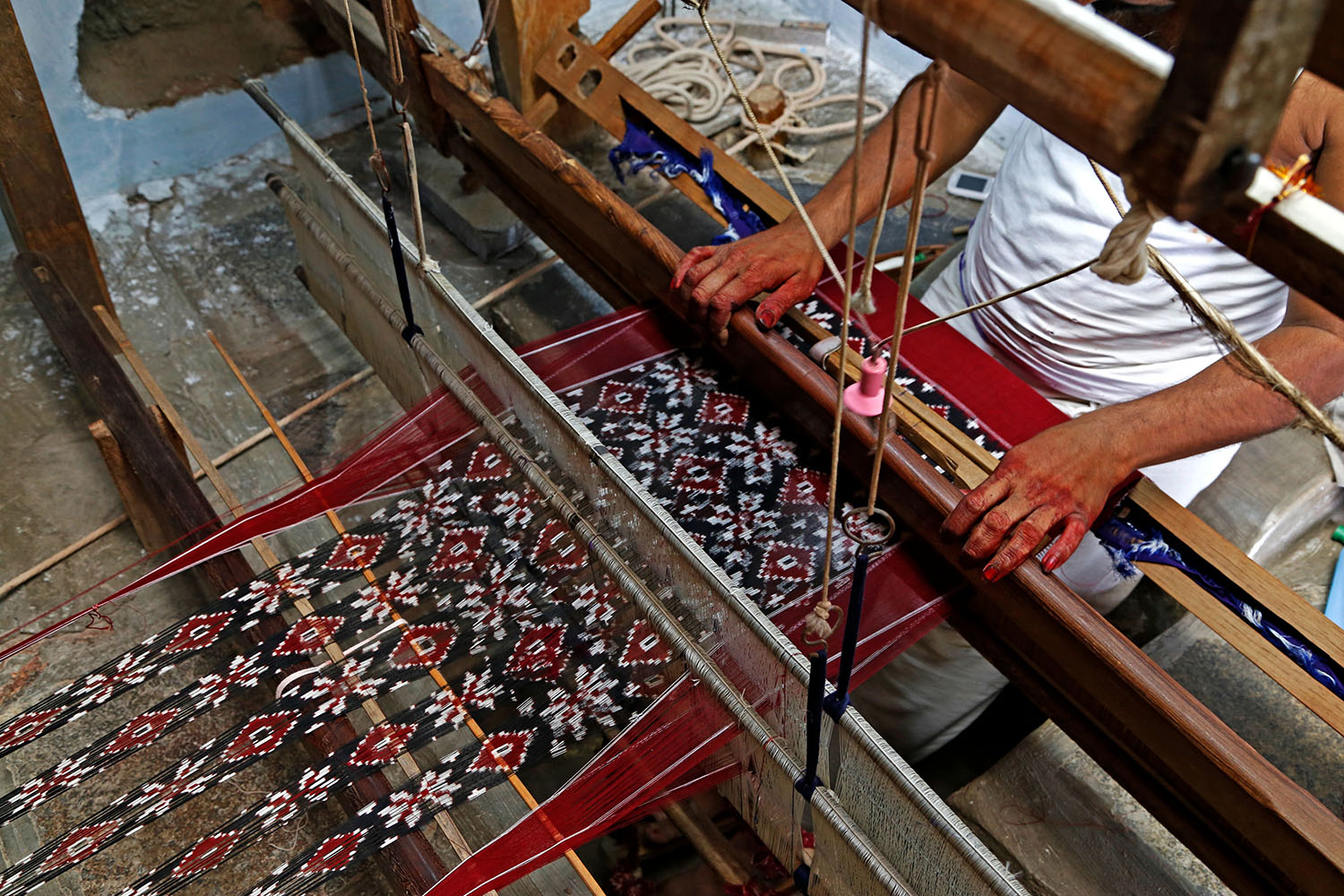
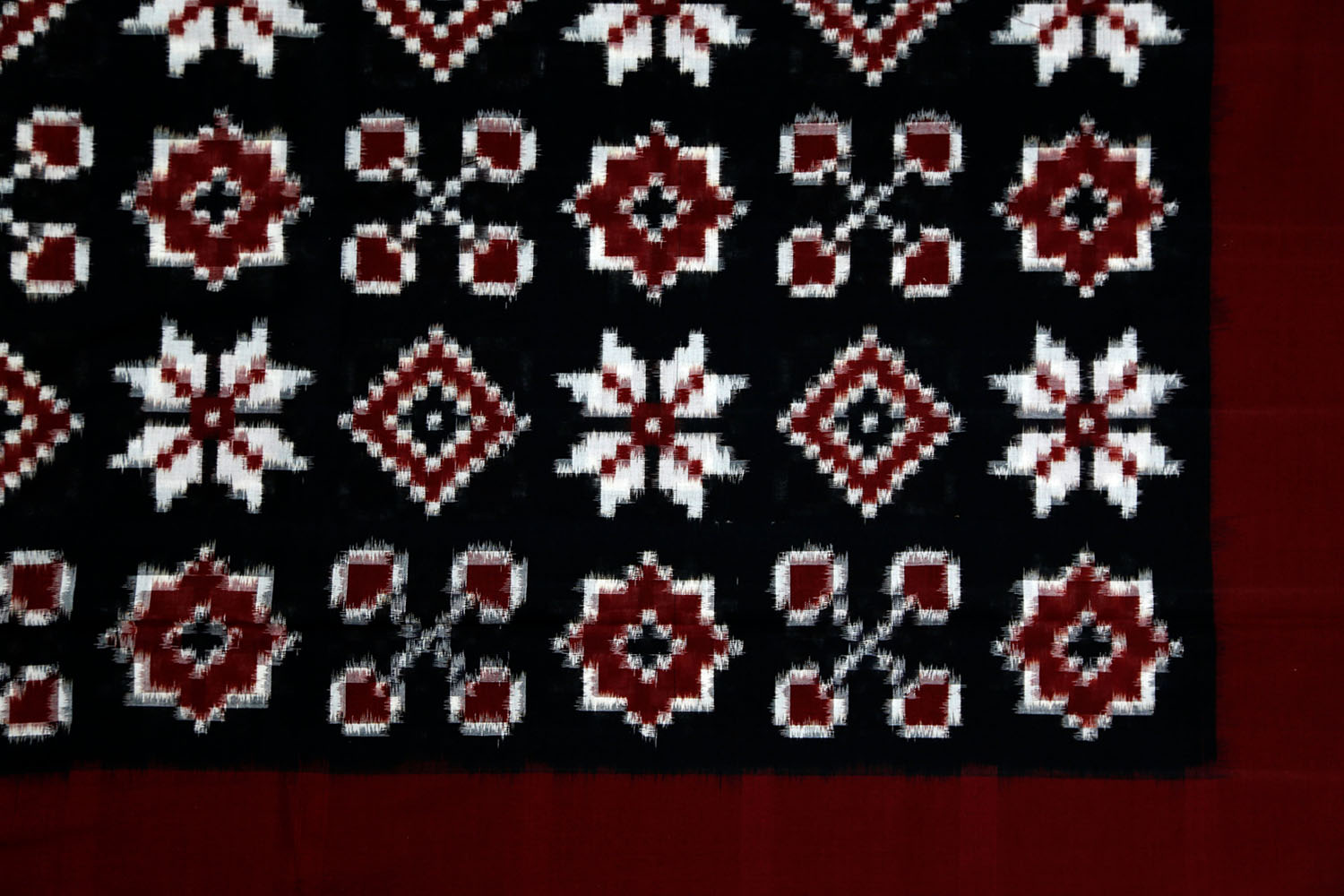
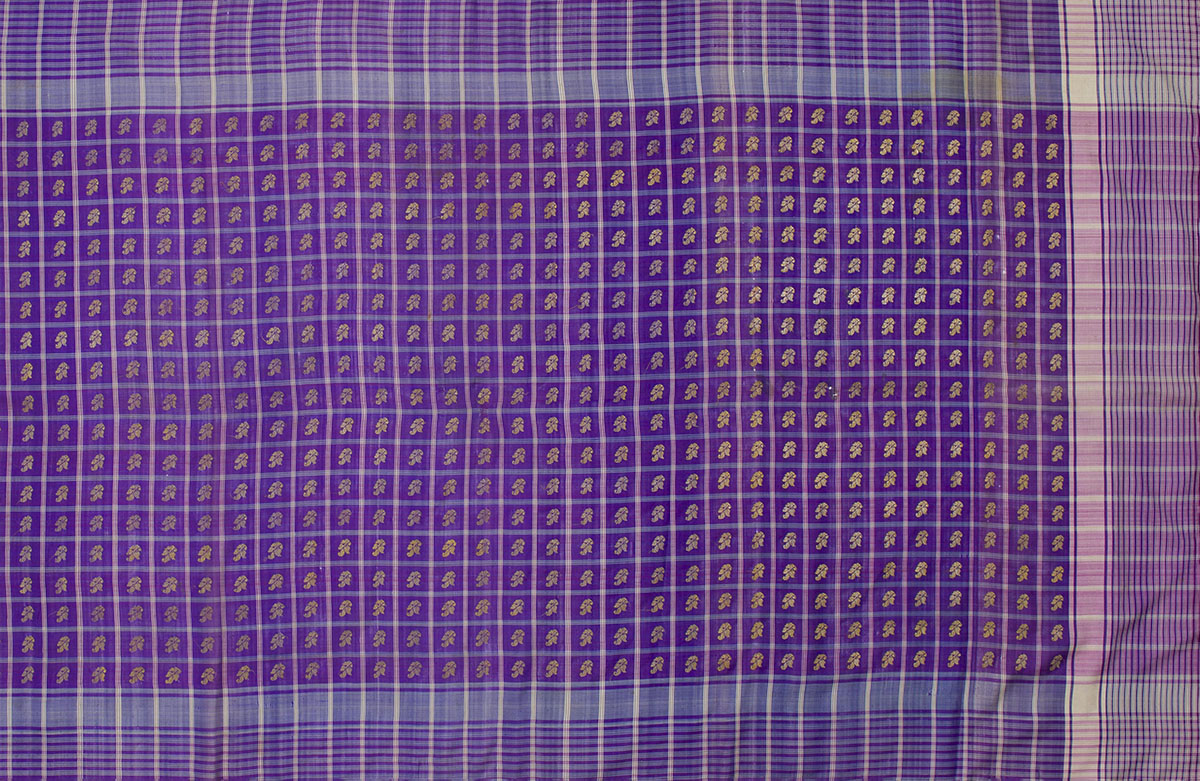
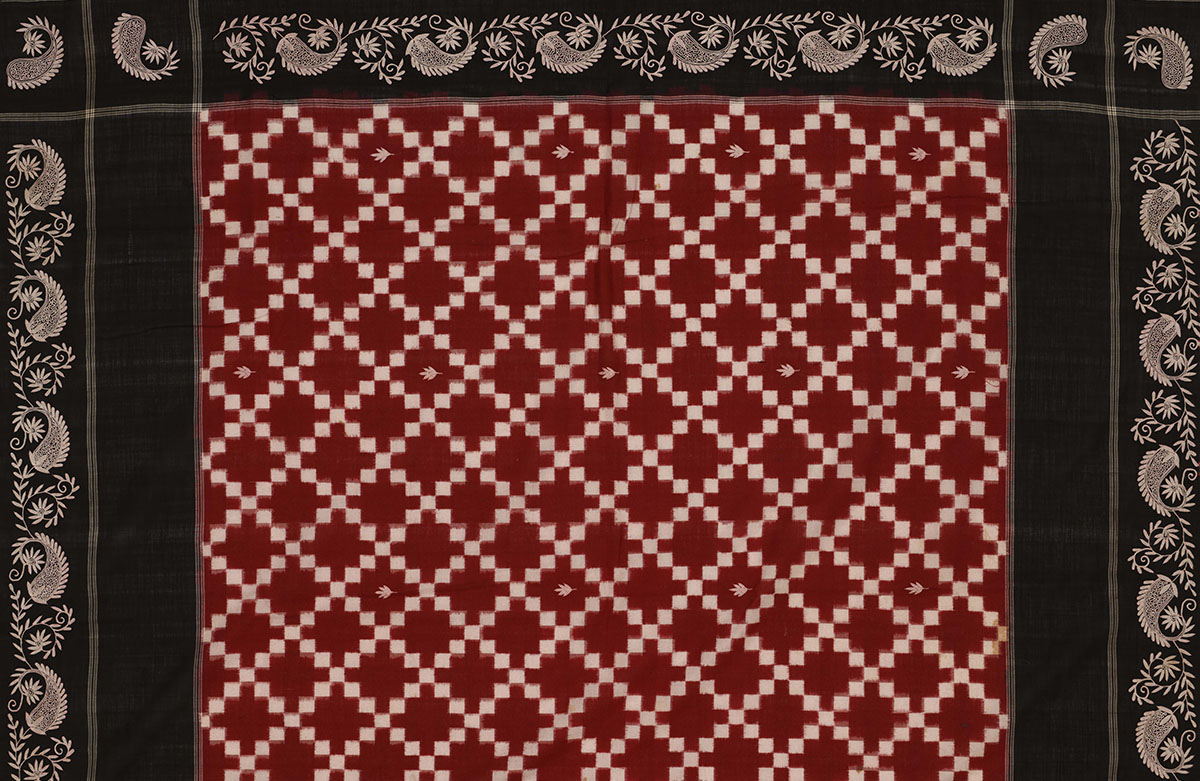
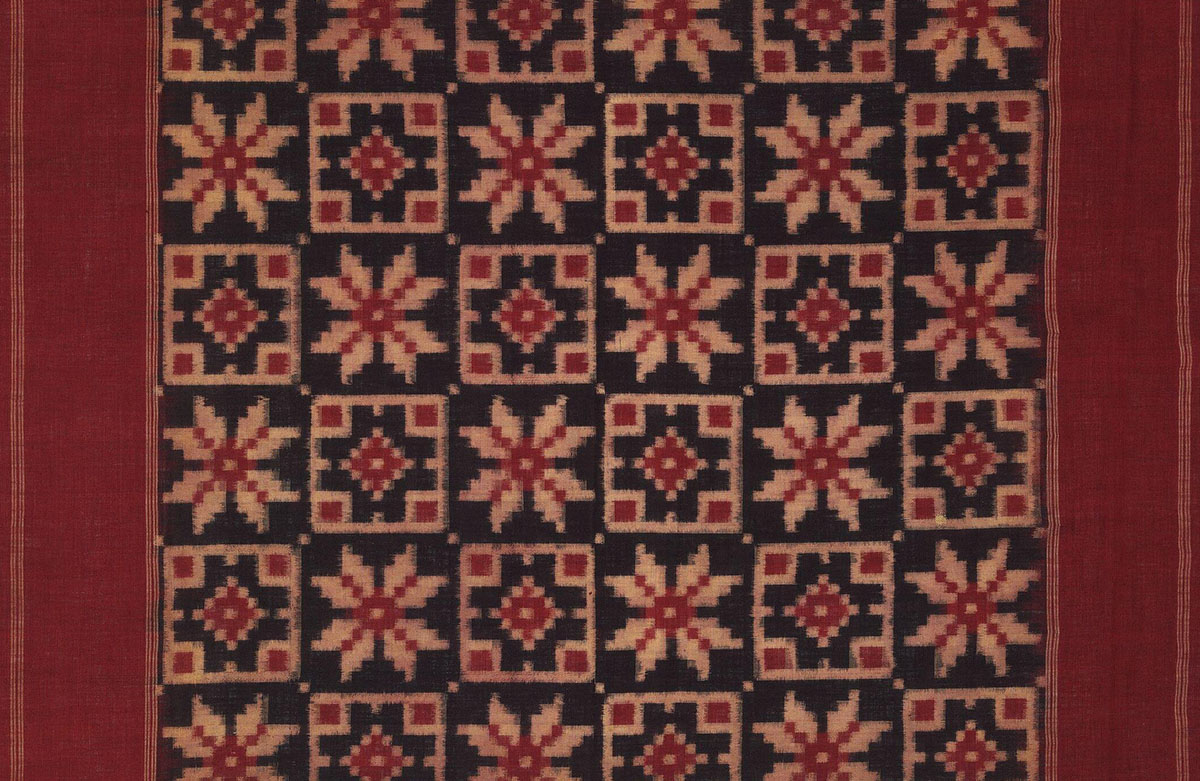

![The façade of the Maneckji Seth Agiary, a Zoroastrian fire temple, is a standout example of the popularity of the Persian Revival Style in Western India in the 19th and 20th centuries. This style was often seen in the architectural patronage of the Parsis, who emerged as one of the most influential mercantile communities of British India. Popular motifs of this style, like the mythical lamasus (winged bulls with human heads) and the faravahar (a winged guardian spirit in Zoroastrianism), drew on the historical art and architecture of the Achaemenid and Sasanian empires from sites like Persepolis, Bisotun, Taq-e Bostan, Naqsh-e Rostam and Naqsh-e Rajab in Persia.
The Parsi community’s adoption of this style occurred largely due to their networks of global commerce and politics, allowing them to access and translate research of ancient Persia into visible symbols that underlined their association with antiquity, imperial power, and art.
نمای آتشکدهی زرتشتی مانِکجی سِت نمونهی بارزی از رواج سبک «احیای [معماری] ایرانی» در غرب هند طی سدههای نوزدهم و بیستم است. این سبک غالباً در بناهایی دیده میشد که پارسیان، از بانفوذترین جوامع بازرگان در هند بریتانیا، بانیشان بودند. نقشمایههای محبوب این سبک، مانند گاو بالدار اساطیری (لاماسو) و فَروَهَر (روح بالدار نگهبان در دین زرتشت)، برگرفته از هنر و معماری شاهنشاهی هخامنشی و ساسانی، در جاهایی چون تخت جمشید و بیستون و طاق بستان و نقش رستم و نقش رجب، بود.
اقتباس جامعهی پارسیان از این سبک بسیار مرهون روابط گستردهی تجاری و سیاسی آنها بود که دسترس به پژوهشها دربارهی ایران باستان و برگردانیدن آنها به نمادهای بصری را ممکن میکرد و بر پیوند پارسیان با دوران باستان و قدرت شاهنشاهی و هنر تأکید میکرد.](https://mapacademy.io/wp-content/plugins/instagram-feed/img/placeholder.png)
